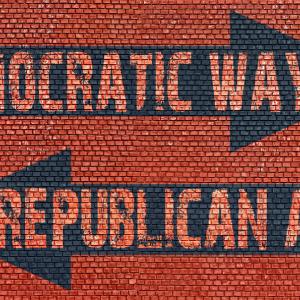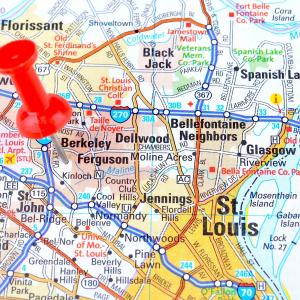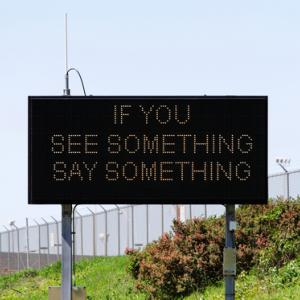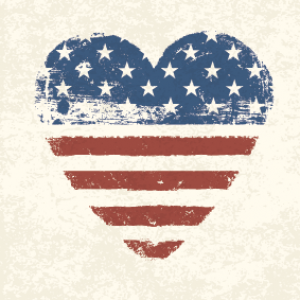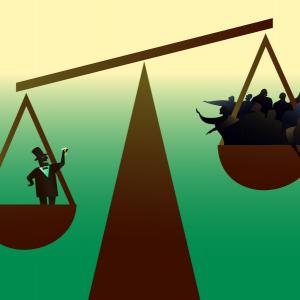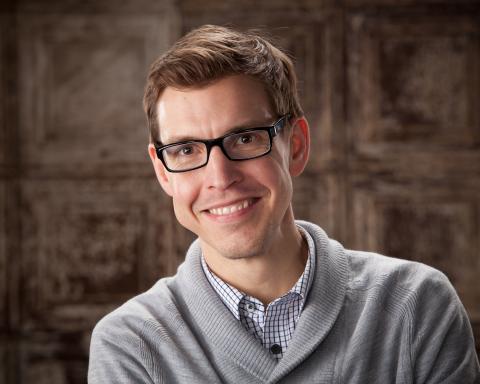
The Rev. Brian E. Konkol serves as Chaplain of the College at Gustavus Adolphus College. Through the Office of the Chaplains, he is responsible for accompanying the Gustavus community by integrating faith and spirituality into the fullness of learning and life.
Konkol is originally from Amherst Junction, WI, and is a graduate of Amherst High School (1997). He completed a Bachelor of Science degree in Criminal Justice (2001) from Viterbo University (La Crosse, WI), in addition to a Master of Divinity from Luther Seminary (St. Paul, MN), and was ordained with the Evangelical Lutheran Church in America (ELCA) in 2005.
Posts By This Author
Gifts Not Chains: Epiphany Wisdom for Foreign Aid
The turn of each calendar year is often filled with an influx of charitable giving, much of which intends to assist those far beyond the borders of the United States. As rigorous debates surround the ethics and oversight of such foreign assistance endeavors, one of the more innovative contributions to this important conversation was produced by South Africa's renowned theologian, the late Steve de Gruchy. In consideration of the Magi and their Epiphany visit with Joseph, Mary, and the newly born Jesus in Matthew 2:1-12, de Gruchy offers a striking interpretation of the biblical text and considers its direct relationship with international relief efforts. As private giving directed to foreign aid continues to grow ( from $8.4 billion in 2000 to $19.1 billion in 2012 ), de Gruchy shows how benevolent intent can lead to oppressive impact, and Epiphany provides important wisdom to navigate the complexities of our policies and practices.
Transpartisanship: An Alternative to Political Dysfunction
The phenomenon of “creeping normality” allows for significant changes to be deemed acceptable when they occur gradually over time, in relatively unnoticed increments, rather than single steps or dramatic and noticeable instances. The “boiling frog” metaphor, which illustrates the familiar account of an unassuming amphibian that is slowly and successfully cooked to death, reveals not only how such instances can occur, but also how a calculated and protracted alteration (produced by those with power to turn up the heat) can possess disastrous results if not noticed and properly countered (by those left in the water). We need not look far for modern-day examples.
Extreme partisanship has crept into our political normality. As revealed last year by the Pew Research Center, our civic temperature is methodically rising, perhaps beyond the boiling point. The study states:
“The overall share of Americans who express consistently conservative or consistently liberal opinions has doubled over the past two decades from 10% to 21%. [As a result], the center has gotten smaller: 39% of Americans currently take a roughly equal number of liberal and conservative positions, down from 49% in surveys conducted in 1994 and 2004.”
The Torture of Our Hypocrisy
We remain bound to such a torturous future, because we continue to condone what we condemn. Over the past several decades our U.S. State Department has condemned Iran, North Korea, Libya, Saudi Arabia, and numerous others for their use of torturous techniques such as waterboarding, stress positions, forced standing and nudity, threats of harm to person and family, sleep deprivation, use of loud music, prolonged solitary confinement and the seclusion of prisoners in small spaces. But the recently-released U.S. Senate Intelligence Committee report on the Central Intelligence Agency (CIA) detention and interrogation program revealed that the U.S. has done exactly to others what we have so adamently condemned of others. In other words, if hypocrisy is a mask, then not only does our nation seem to wear one, but our faces have clearly grown to more fully fit into it.
When Decemberism Crucifies Christmas
One of the dominant dogmas of the season seems to be both loud and clear: Our value as human beings is often dictated by our capacity to contribute toward economic growth.
This is what happens when Decemberism crucifies Christmas.
One may define “Decemberism” as a state in which the value of human life is determined exclusively by our personal rates of production and consumption. We notice this condition most often, of course, in December. Decemberism is the predominant religious tradition of the so-called “holiday shopping season,” and the significance of Christmas is consistently crucified as a result. As Victor Lebow states:
“Our enormously productive economy … demands that we make consumption our way of life, that we convert the buying and use of goods into rituals, that we seek our spiritual satisfaction, our ego satisfaction, in consumption … we need things consumed, burned up, replaced and discarded at an ever-accelerating rate.”
In striking contrast to the Christmas ramifications of God’s incarnation, to be a human of any value in our current context is closely connected with supply and demand, even if it all leads to our personal and public self-destruction.
Why the Body of Christ is Not White
Editor's Note: The following transcript is from a homily given in Christ Chapel at Gustavus Adolphus College in St. Peter, Minn. As part of the “From Segregation to Integration through Conversation” faith and learning series, the text for the day was 1 Corinthians 12:14-26.
The color of my skin is white. I am Caucasian. I am white, from head to toe, in case you had not noticed. It is quite possible that you had not noticed, because in case you have not noticed, most days in this place, most all of us have skin that is white. And as those of us that experience winters in Minnesota know better than most, in the midst of a “white out” it is difficult to notice anything that is not white.
While there are some special days with some special circumstances and some special exceptions, we in this place tend to be white people surrounded with other white people. Because the fact of the matter is that most white people in most places tend to have social circles that are mostly filled with other white people.
As was recently reported by the Public Religion Research Institute’s 2013 American Values survey, when respondents were asked to identity as many as seven people with whom they had discussed important matters in the six months prior to the survey, the results revealed just how segregated white social circles actually are. As reported by the study, the social circles of white people in the United States are 91 percent white. In addition, the analysis also showed that over 75 percent of white people reported exclusively white social circles, without any minority presence whatsoever.
All together, the Public Religion Research Institute showed the sociological fact that, even in an increasingly diverse multi-cultural nation, birds in the United States with white feathers — such as my own — continue to flock together. In other words, contrary to the common cliché often given in response to these difficult topics, when it comes to white American people, the facts reveal that "some of our best friends" simply are not black.
Housing, Homogeny, and Hostility
I am white. Most of the people near my house are white. This is the way it is for most of us white people in the U.S., and as we continue to be shown, the consequences are both critical and countless.
While the Fair Housing Act of 1968 prohibits all forms of housing discrimination, the U.S. Department of Housing and Urban Development estimates that millions of instances occur each year, thus residential segregation continues to be a common facet of modern day life. To put it simply, white people tend to live by other white people, and it is the way it is by no accident.
Segregated neighborhoods are often reinforced by the practice of racial “steering” by real estate agents, or when landlords deceive potential tenants about the availability of housing or perhaps require conditions that are not required of white applicants. In addition, lending institutions have been shown to treat mortgage applicants differently when buying homes in non-white neighborhoods in comparison to their attempt to purchase in white neighborhoods. As a result of such practices, white people tend to live in a state of residential separateness, for as the most recent U.S. Census date confirms, genuine racial integration is — for the most part — alarmingly rare.
Of course, our own behaviors contribute to our current state of affairs. White people seem to prefer housing located by other white people. As a result, far too many white people are willing (and able) to pay a premium to live in predominantly white neighborhoods. So equivalent housing in white areas commands a higher rent than others, and through the process of bidding-up the costs of housing, many white neighborhoods effectively shut out people of color, because those without white skin are more often unwilling (or unable) to pay the premium price to buy entry into such white neighborhoods. As a result of such white flight and isolation, not only do we witness a rise in racial ignorance and indifference, but it also leads to increased injustice in the form of disproportionate hostility directed at people of color.
Deconstructing God's Mission
When I ask people to describe a typical “missionary,” the usual response includes that of a young man with black pants and a white collared shirt (with a name tag attached) that knocks on doors, or perhaps an evangelical preacher who stands on (and shouts from) street corners, or possibly one who travels the far ends of the earth to help the poor and plant new churches. But just because some are more vocal and visible than others, such missionaries should not be acknowledged as the totality of all that exists, because:
All people in all places are missionaries, for all people in all places participate within a particular mission in some shape or form. Missionaries are as diverse as the human community itself.
While most missionaries do not self-define as such, the world is filled with them, many of whom serve with a high degree of commitment and faithfulness. For instance, if a missionary is – by definition – one who participates within a particular mission, then those who consume Coca-Cola are not merely consumers, but they are – by definition – missionaries of the Coca-Cola brand and its corporate mission. Similarly, there are countless political missionaries in all corners of the globe. As election cycles draw close, such missionaries multiply in mass numbers, and their energetic zeal often rivals – and sometimes far exceeds – the determination of many religious clergy labeled as extreme.
The world consists of countless missions and innumerable missionaries. As stated from the onset, all people in all places are missionaries, so not only should we hesitate to assume we know what a “typical missionary” is, we should also attempt to distinguish who a Christian missionary is to be within the context of countless other (complementary and competing) missions and missionaries. So what follows is a brief reflection on what the focus of God’s mission might be, and an exploration of how Christian missionaries may be able to function as a result.
Payday Lending: Time to Crack the Trap in Minnesota
The United States hosts more than 23,000 payday lending stores, which outnumbers the combined total of McDonald’s, Burger King, Sears, J.C. Penney, and Target stores. These payday lenders do not make conventional loans as seen in most banks, but instead offer short-term loan amounts for short periods of time, usually until the borrower’s next paycheck, hence the name “payday loans.”
While some borrowers benefit from this otherwise unavailable source of short-term and small-amount credit, the payday lending business model fosters harmful serial borrowing and the allowable interest rates drain assets from financially pressured people. For example, in Minnesota the average payday loan size is approximately $380, and the total cost of borrowing this amount for two weeks computes to an appalling 273 percent annual percentage rate (APR). The Minnesota Commerce Department reveals that the typical payday loan borrower takes an average of 10 loans per year, and is in debt for 20 weeks or more at triple-digit APRs. As a result, for a $380 loan, that translates to $397.90 in charges, plus the amount of the principal, which is nearly $800 in total charges.
The Sexist Effects of Sexting the Biblical Text
One of the most commonly sexted biblical texts comes from the 5th Chapter of Matthew’s Gospel, when we hear the following words attributed to Jesus: “You have heard that it was said, ‘You shall not commit adultery.' But I tell you that anyone who looks at a woman lustfully has already committed adultery with her in his heart” (5:27-28). At first glance the biblical text appears quite straightforward, as Jesus is speaking to a small group of men, and it seems that he simply proclaims the need to keep their sexual temptations in check. “Fellas, keep it in your pants and out of your minds, or else!” is a standard religious reading. However, such an overtly sexted interpretation of the biblical text limits the extensiveness of what Jesus actually attempted to communicate through it. In other words, the text in question is about far more than physical sex, as it serves Jesus’ much larger liberative purpose to strategically and radically revolutionize the totality of how women and men related to each other.
Peaceful Words for Angry Birds
While Angry Birds has produced a massive monetary windfall over the past few years, the game has endured a significant level of controversy, especially in recent months. In January it was revealed that Angry Birds was a “leaky application,” as it was used by the National Security Agency and Government Communications Headquarters to collect private data about its users, such as residential location and sexual orientation. According to numerous online and print media investigative publications, the private user information of Angry Birds users was leaked through the application itself and collected by government authorities and private retailers for detailed analysis (under the stated purpose of research and national security). In the midst of it all, the incriminating evidence revealed that Angry Birds was a massive privacy hazard, as the Rovio Entertainment application allows the intimate details of its user identities to be stolen and even sold.
A Lenten Commitment to Homeland Insecurity
We clearly live in a world that is filled with risks and dangers, and because the increased availability of modern technology allows for harm to occur at unprecedented rates and levels, one can argue that we live in one of the most treacherous eras of human history. However, while the need for protection from harm is both natural and commendable, we are forced to consider whether protection itself can eventually become harmful, unnatural, and even condemnable. In other words, with such extensive resources invested in the pursuit of safety and security, one is forced to consider: What are the consequences of such “protection?" And what happens when so much time and effort is dedicated toward protecting ourselves from our neighbors that we eventually lose sight of who are neighbors actually are? At what point does the heightened priority of protection lead to the increased inevitability of isolation and ignorance? And finally, in our efforts to build impenetrable walls of protection (often in the name of freedom), do we not eventually incarcerate ourselves from the rest of the world and thus limit what it actually means to live free?
Being Saved From Time in 2014
To orientate a variety of foreigners for residence in North America, L. Robert Kohls and his staff at the United States Information Agency constructed a groundbreaking article, “The Values Americans Live By.” Kohls felt that visitors to the U.S. needed to understand “common American values” that would allow them to integrate more fully into the predominant cultural currents. All together, “The Values American Live By” highlights numerous ideals that most (but not all) U.S. citizens possess, all for the purpose of awareness building and cross-cultural understanding.
Among the topics Kohls covered in his 1984 article was the importance of time, for people from the U.S. often conceive of time in ways far different from others around the world.
Being Human in December
A predominant message of this holiday season seems to be both loud and clear: Our value as human beings is often dictated by our capacity to consume.
While the average North American consumes approximately twice as much as 50 years ago, we are significantly less satisfied with the quality of our lives, which is — of course — contrary to the mass “this stuff will make you happy” messages we receive on countless occasions each day. Nevertheless, we continue to embrace a culture of consumerism, for we consume at staggering rates, not only in an attempt to make right our perceived wrongs, but also because we are led to believe that such devotion contributes to the wellbeing of society. As Victor Lebow states, “Our enormously productive economy ... demands that we make consumption our way of life, that we convert the buying and use of goods into rituals, that we seek our spiritual satisfaction, our ego satisfaction, in consumption ... we need things consumed, burned up, replaced and discarded at an ever-accelerating rate.” According to the most vocalized narratives that affect contemporary life, to be a human of significant value in North America — especially during the month of December — is to be a committed and consistent consumer, even if it leads to our personal and public self-destruction.
Give (The Department of) Peace a Chance
The U.S. has resisted this peacemaking policy for generations. Even as far back as 1792, a signer of the Declaration of Independence, Benjamin Rush, along with Benjamin Banneker, suggested the blueprint for an Office of Peace (intended to counter what was then known as the Department of War). President George Washington stated that his first wish was “to see this plague of mankind, war, banished from the earth,” yet legislation for a Department of Peace was not introduced until 1935, which, by 1969 wasfollowed by 90 additional bills. And so, while many U.S. citizens state a longing for peace and nonviolence, we seem to lack the political will and public motivation to make it a reality, and the result is a continued state of destruction.
Obama, Seacrest, and Our War Against Indifference
As President Barack Obama prepared to address the nation on Tuesday evening to articulate a plan for intervention in Syria, NBC rushed to assure its viewers that the Ryan Seacrest-hosted game show, The Million Second Quiz, would not be interrupted. As detailed by the network, the president would speak for only 15 minutes, thus viewers could watch their televisions with full confidence that the entirety of the hyped-up program would be fully protected. While there was suspense as to whether NBC would follow through on its promise of an unbroken telecast, the presidential coverage stayed within the agreed upon time slot, viewers were able to watch their regularly scheduled program, and all was well in the world.
In the meantime, all is not well in the world.
But We Had Hoped...
In only four words — “But we had hoped” (Luke 24:21) — we find one of the most profound expressions of human emotion in the entire New Testament.
In the midst of all that was taking place around Jerusalem nearly two thousand years ago, Cleopas “stood still, looking sad,” for his life had taken a surprising turn for the worse. He had hoped that Jesus “was the one to redeem Israel,”yet it appeared that such dreams were shattered. Because of it all, Cleopas was left to move forward into a reality that he had not previously imagined. But we had hoped.
One can presume that Cleopas and his travel companion on the road to Emmaus not only felt shocked, lost, angry, and afraid, but also that their collection of emotions were representative of most who have come to believe that Jesus was the Messiah. While many had expected Jesus to be with them “mighty in word and deed” for many years to come, he was suddenly removed from their presence. In light of all that took place, the dreams of those who believed in Jesus were abruptly dashed, and the community of disciples was left — both literally and metaphorically — wandering down the road into a future that seemed removed of joy and filled with despair. But we had hoped.
When Robbers and Innkeepers Profit from Good Samaritans
The Parable of the Good Samaritan is one of the most well-known, beloved, and influential portions of the New Testament. As a striking narrative about care and compassion for others, the content of Luke 10:29-37 has reverberated throughout the centuries as a clear and profound call to public love through personal action. All together, the radical hospitality of the Samaritan has sparked various charitable acts and organizations around the world. Thus, one can argue that no other parable has offered a more profound impact on the course of human history.
Beers and Hymns
A few months ago, Stephen Marsh, my fellow pastor, and I walked into Chief’s Tavern on the east side of Madison, Wis., ordered a couple pints, sat on a pair of stools and discussed an idea that would eventually have a massive impact on the congregation we serve together. In specifics, we wondered whether we could spark a ministry by fusing two of our most treasured Lutheran traditions: beers and hymns.
The budding idea, which originated from some creative faith communities in other parts of the country, was to find a local tavern willing to host a monthly one-hour session of hymn-inspired evening fellowship. Within a few minutes of our conversation, we were joined by Brian Mason (owner of Chief’s Tavern), and what followed was a ground-breaking partnership between parish and pub. The first Beers & Hymns event was scheduled, and as the date drew closer, our collective thoughts and prayers moved back and forth between “Thanks be to God” and “Lord, have mercy”!
Pentecost and the Crucifixion of Privilege
While the consequences of social privilege are alarming for numerous reasons, we are reminded that such systematic inequalities are by no means unique to the current day and age. For example, during Jesus’ ministry he encountered a predominant culture that distributed a wide variety of elite benefits based upon gender, class, ethnicity, and other forms of false favoritism. However, one of the primary distinctions of Jesus’ life, which he continually modeled for his disciples, was a prophetic confrontation with unjust structures of social privilege.
As Jesus accompanied women, tax collectors, lepers, prostitutes, and others firmly placed on the underprivileged margins of society, he repeatedly sought the reversal of embedded discrimination and disadvantage. In doing so, not only did Jesus promote Good News of eternal life for after death, but he sought to “let the oppressed go free” (Luke 4:18) for the fullness of life after birth.
While Jesus continually endorsed the revolution of unjust social privilege, and although he taught his followers to do likewise in his name, the harsh reality is that privilege based on prejudice is profitable, which makes it difficult – if not impossible – for those in power to surrender voluntarily
Anesthetics and Advocates Below the Poverty Line
By definition, an anesthetic is a drug used to relieve pain (analgesia), relax (sedate), induce sleepiness (hypnosis), spark forgetfulness (amnesia), or to make one unconscious for general anesthesia. Anesthetics are generally administered to induce or maintain a state of anesthesia and facilitate a procedure. I believe that anesthetic can be employed as a striking image for particular deficiencies in faith-based responses to extreme poverty.
As one can cite many examples where faith is proclaimed and practiced solely as an escape from – rather than engagement with – the numerous struggles associated with impoverishment, we recognize that anesthesia is incomplete without corresponding acts of sustainable social surgery.
...
A practical way to serve within the tension of anesthetic and advocate is to experience a small portion of life below the poverty line. The World Bank sets extreme poverty as below $1.50 per day, and I plan to stand in solidarity by attempting to eat on less than $1.50 per day over the course of five days (Monday – Friday).

